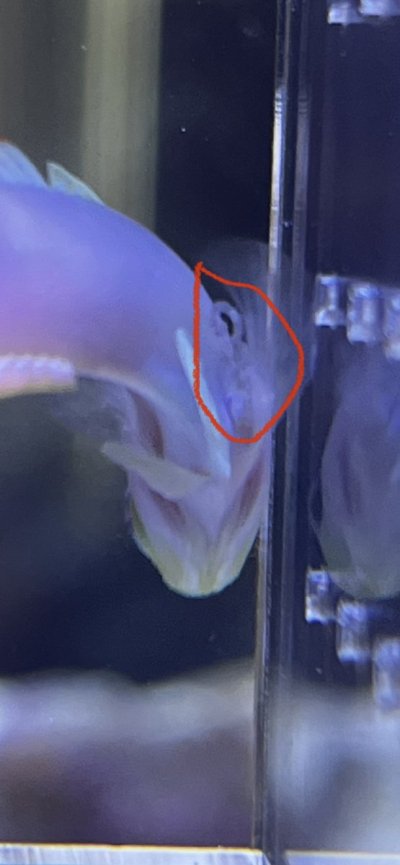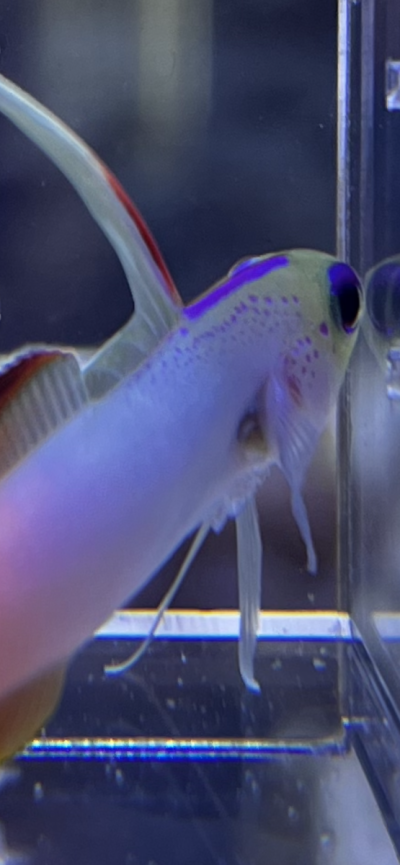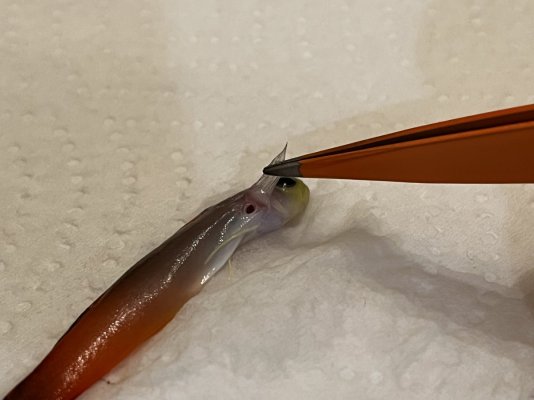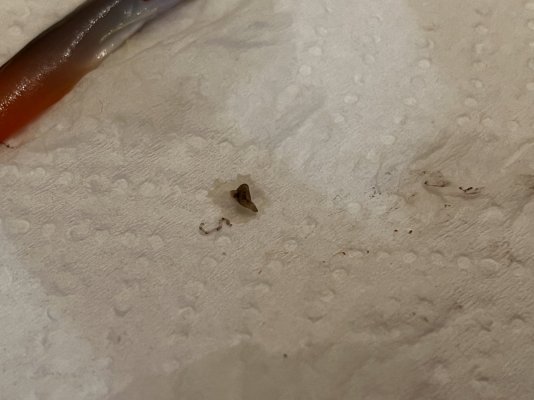The circled area looks like the egg case of the copepod Serpentisaccus magnificae that infects fire fish. Prazipro won’t cure it. Freshwater dips can kill it, but the trouble is that the head of the parasite is buried deep in the fish’s belly. The outcome is usually not good.
Jay
Edit - just saw your post, sorry.


















